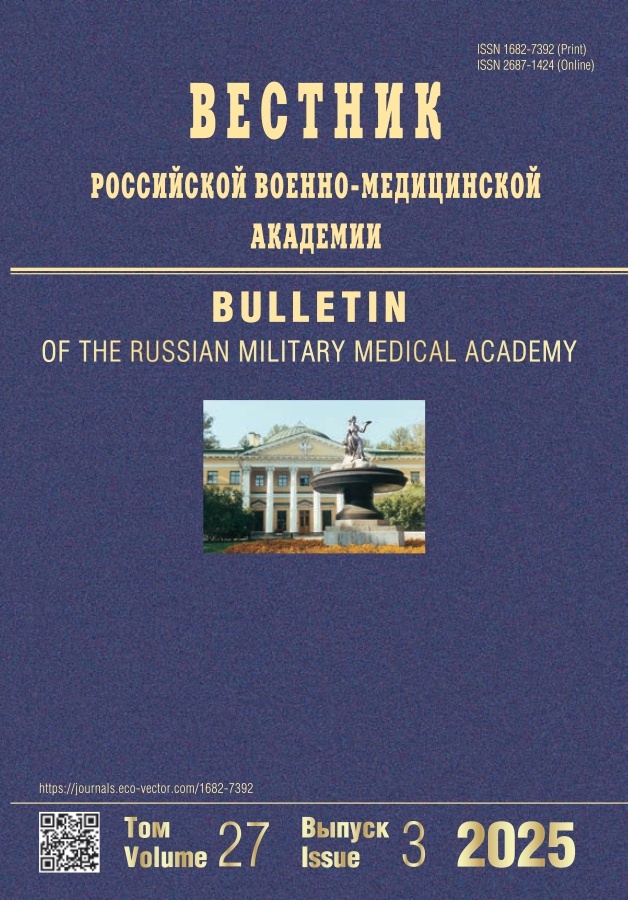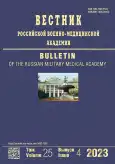Experimental evaluation of the purity of medical oxygen obtained by adsorption technology with pressure fluctuations taking into account the variability of the parameters of the incoming air
- Authors: Miroshnichenko Y.V.1, Enikeeva R.A.1, Klimkina E.A.1
-
Affiliations:
- Kirov Military Medical Academy
- Issue: Vol 25, No 4 (2023)
- Pages: 647-652
- Section: Original Study Article
- URL: https://journals.rcsi.science/1682-7392/article/view/253757
- DOI: https://doi.org/10.17816/brmma607444
- ID: 253757
Cite item
Abstract
This study presents the results of the evaluation of the purity of medical oxygen obtained by adsorption technology with pressure fluctuations, taking into account the variability of the parameters of the incoming air, and the results of the correlation analysis of data obtained from the monographs of the European and American Pharmacopoeias. The quality of oxygen obtained from air that meets sanitary standards and under conditions of the “worst case,” while fixing the time of the output of the slip signal of monoxide and carbon dioxide as marker gases, was assessed. The slip time under the experimental conditions was 13 h 22 min. The composition of the gas produced by installation was analyzed. Impurities of nitrogen, argon, and water were recognized as predominant quantitatively. Nitrous gases and sulfur dioxide were not detected. A comparative assessment of the data on medical oxygen (93%) presented in the European EP 8. 0 (No. 2455) and the American USP 38-NF (No. 4180) pharmacopeias showed that no single approach is available to assess the quality of 93% medical oxygen in pharmaceutical practice worldwide. The authors of the above-mentioned pharmacopeias note that installations for obtaining 93% medical oxygen, implementing adsorption technology with pressure fluctuations, must be equipped with gas-analytical devices to quantify the level of at least two impurities: carbon monoxide and dioxide. In general, the data obtained indicate that when obtaining 93% medical oxygen by adsorption technology with pressure fluctuations from air corresponding to sanitary and hygienic indicators (clean), the resulting gas did not contain impurities requiring quantitative assessment and/or identification. If oxygen in its pure form is rarely supplied to the patient, its further dilution to 40%–60% is more often required, and the content of hypothetically possible impurities becomes negligible. However, the technology of air separation on molecular sieves is a complex physicochemical (thermodynamic) process, and its effectiveness depends on the component composition of the incoming air, which may change when working under unfavorable environmental conditions in various locations. In this regard, medical oxygen production plants that implement this technology must employ gas-analytical devices to quantify the level of carbon dioxide and carbon monoxide impurities without fail.
Full Text
##article.viewOnOriginalSite##About the authors
Yurii V. Miroshnichenko
Kirov Military Medical Academy
Author for correspondence.
Email: miryv61@gmail.com
SPIN-code: 9723-1148
Scopus Author ID: 56958409800
MD, Dr. Sci. (Pharm. ), Professor
Russian Federation, Saint PetersburgRimma A. Enikeeva
Kirov Military Medical Academy
Email: rimmaspec@mail.ru
ORCID iD: 0000-0002-6058-7187
SPIN-code: 4917-6516
MD, Cand. Sci. (Pharm. ), Associate Professor
Russian Federation, Saint PetersburgEkaterina A. Klimkina
Kirov Military Medical Academy
Email: eamir@yandex.ru
ORCID iD: 0000-0002-3391-7208
SPIN-code: 9298-8619
MD, Cand. Sci. (Pharm. ), associate Professor
Russian Federation, Saint PetersburgReferences
- Trishkin DV, Fisun AYa, Kryukov EV, Vertii BD. Voennaya meditsina i sovremennye voiny: opyt istorii i prognozy, chto zhdat’ i k chemu gotovit’sya. In: Collection of articles of the III All-Russian Scientific and Technical Conference “Sostoyanie i perspektivy razvitiya sovremennoi nauki po napravleniyu «Biotekhnicheskie sistemy i tekhnologii»”, Anapa, May 27–28, 2021. Anapa: Military Innovative Technopolis «ERA». 2021:8–16. (In Russ.).
- Miroshnichenko YV, Ivchenko EV, Kononov VN, et al. Prospective directions for innovative development strategies in pharmacy in the military health system of the Russian Federation. Bulletin of the Russian Military Medical Academy. 2022;24(1):179–188. (In Russ.). doi: 10.17816/brmma101106
- Kryukov EV, Trishkin DV, Saluhov VV, Ivchenko EV. Experience of military medicine in the fight against new coronavirus infection. Bulletin of the Russian Military Medical Academy. 2022;92(7): 699–706. (In Russ.). doi: 10.31857/S086958732207009X
- Andreenko AA, Andrejchuk YuV, Arsent’ev VG, et al. Infektsiya, vyzvannaya SARS-CoV-2. Saint Petersburg: MMA; 2023. 260 p. (In Russ.).
- Miroshnichenko YV, Enikeeva RA, Shchegolev AV, Vertii BD. Implementation of modern approaches to the provision of medical oxygen in military healthcare. Bulletin of the Russian Military Medical Academy. 2022;343(6):68–72. (In Russ.). doi: 10.52424/00269050_2022_343_6_68
- Jayaraman A, Cho S, Yang RT, Bhat TSG. Adsorption of nitrogen, oxygen and argon on Na-CeX zeolites. Adsorption. 2002;8(4):271–278. doi: 10.1023/A:1021529328878
- Akulov AK. Proizvodstvo azota i kisloroda metodom adsorbtsii pri kolebanii davleniya. Exposition Oil Gas. 2017;3(56):67–68. (In Russ.)
- Petrov SV. Medical oxygen. Comparison of approaches to quality assessment in the European Union and in the Russian Federation. Drug Development & Registration. 2014;3(8):124–126. (In Russ.).
Supplementary files







